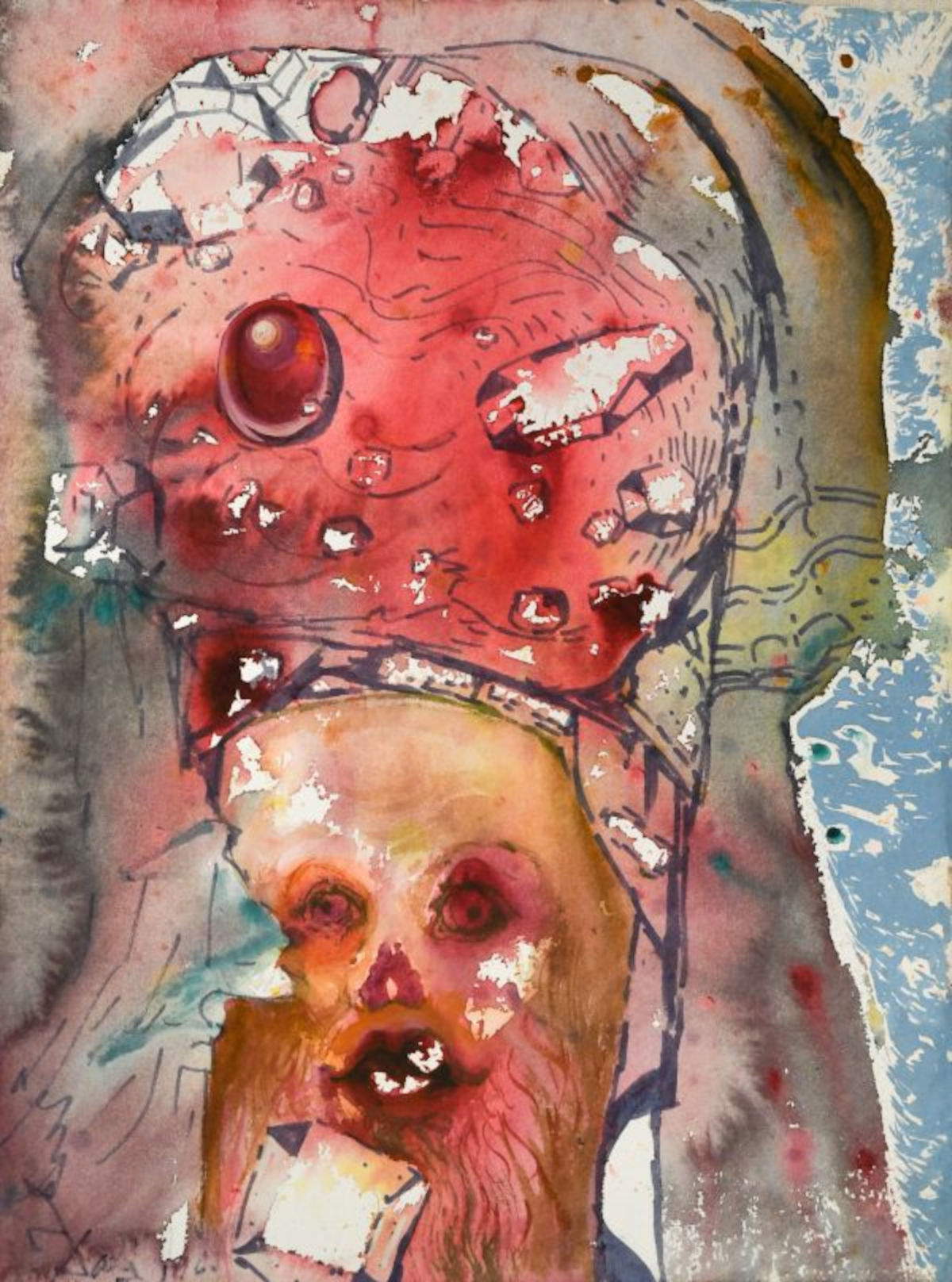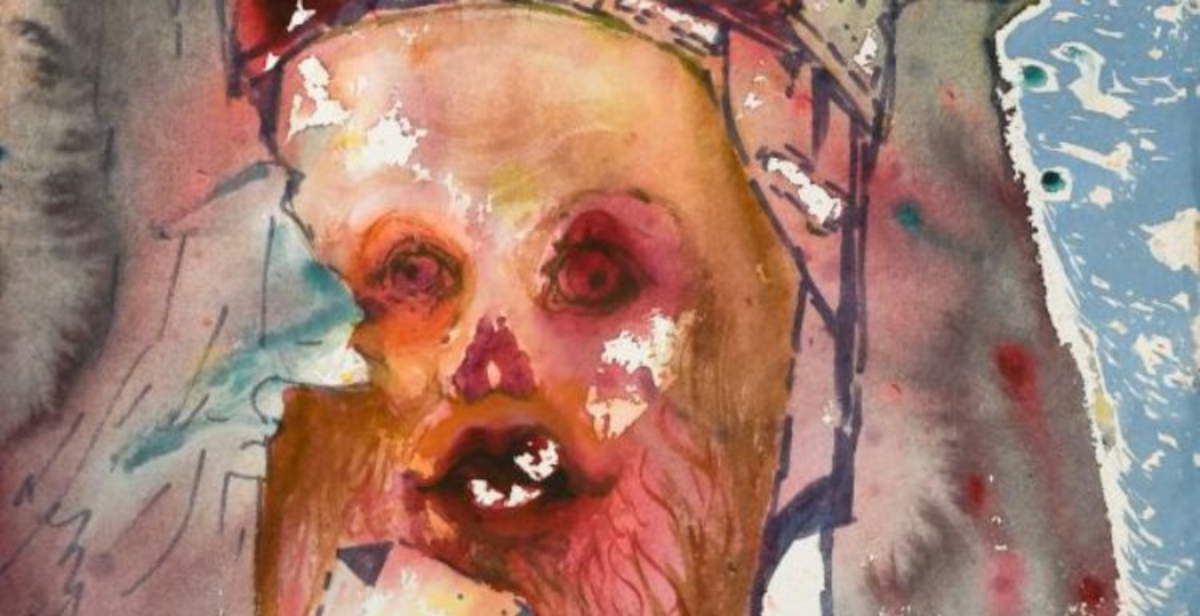A forgotten work by Salvador Dal í, purchased for 150 pounds, the equivalent of just under $200 at a yard sale in the United Kingdom, is set to be auctioned at an estimated valuation of up to 200 times its initial price on Oct. 23 at the Cheffins Art and Design Sale in Cambridge, with an estimate of between 20,000 and 30,000 pounds (about $26,700 to $40,000).
The painting, a watercolor titled Old Sultan, 1966, was discovered in 2023 during a domestic goods sale in Cambridge, where an antiques dealer recognized in the lower right corner a familiar signature: that of the master of surrealism. The scene depicted, a sultan wearing a bejeweled turban, is not reminiscent of the dreamlike, disturbing universes typical of the Spanish artist, but instead has its roots in a little-known project from the 1960s. The work measures 38 x 29 cm and is made with mixed media, including watercolor and marker. The subject is from The Thousand and One Nights, the famous collection of Middle Eastern folk tales that Dalí chose as the theme for a commissioned illustrated series. The certificate of authenticity was signed by Nicolas Descharnes, an art historian and one of the leading experts on Dalí’s work, who confirmed the painting’s consistency with other pieces in the same series in terms of style, subject, colors, quality and paper size.
“The seller,” comments Gabrielle Downie of Cheffins, “who wishes to remain anonymous, completed initial research on the painting and discovered that the image had been offered for sale by Sotheby’s in the 1990s, attributed to Dalí. The loss of an attribution is quite rare in the modern art world, making this a significant rediscovery for Dalí scholars. To manage a true rediscovery of a work by the man who is easily one of the world’s most famous artists and the godfather of surrealism is quite an honor. It was an exciting process to research and authenticate this painting and is a testament to the significant artistic knowledge of the sellers who was able to locate this picture in a house clearance sale. While Dalí’s work is often among the most recognizable, this is an unusual piece that shows a different side of his practice when working in watercolor.”

The painting dates from 1966 and is part of a cycle of works commissioned in 1963 by the Italian couple Giuseppe and Mara Albaretto. Initially, the commissioners’ intent was to commission Dalí to illustrate a Bible, but the artist proposed instead to try his hand at The Thousand and One Nights, a theme that would allow him greater creative freedom. The project called for 500 illustrations, but Dalí completed only about a hundred. Of these, half remained in the hands of the publishing house Rizzoli, which was to handle the publication. However, many of the works kept by the publisher were lost or suffered damage over the years. The other half was retained by the Albarettos and later inherited by their daughter Christiana, who was also the artist’s goddaughter.
“The Albarettos,” Downie continues, "who commissioned this work had originally asked Dalí to illustrate a Bible in 1963, but at the artist’s own insistence, DalG ended up instead illustrating scenes from One Thousand and One Nights, a collection of Middle Eastern folk tales. It seems that Dalí was fascinated by Moorish culture and believed he came from a Moorish line. It seems that this project was abandoned, with Dali completing only 100 of the planned 500 works Of these 100, half remained with the Rizzoli publishing house and were damaged or lost; the other 50 remained with the Albarettos and were later inherited by their daughter, Christina, who was also Dali’s goddaughter. It is the 50 that were kept by the family that were published in 2016 by the Folio Society the subject. It is very likely that the work in question was from the batch of 50 that were kept and later lost by the publishers."
These very last 50 works resurfaced in 2014, when the Folio Society edited their publication, rekindling interest in a project that had been in the shadows for decades. Renewed attention to these illustrations has also stimulated curiosity about those works considered missing, which, in all likelihood, included Old Sultan. The upcoming move to auction could further help rewrite the critical fortunes of a project that, for decades, has remained on the fringe of attention. And while attention focuses on the final figure Old Sultan will reach on Oct. 23, its story sheds light on a lesser-known portion of Dalí’s output of oriental suggestions, forgotten commissions and unexpected recoveries.
 |
| He buys work at market for 150 pounds and discovers he has a Dalí. Now goes to auction estimated at 30,000 |
Warning: the translation into English of the original Italian article was created using automatic tools. We undertake to review all articles, but we do not guarantee the total absence of inaccuracies in the translation due to the program. You can find the original by clicking on the ITA button. If you find any mistake,please contact us.